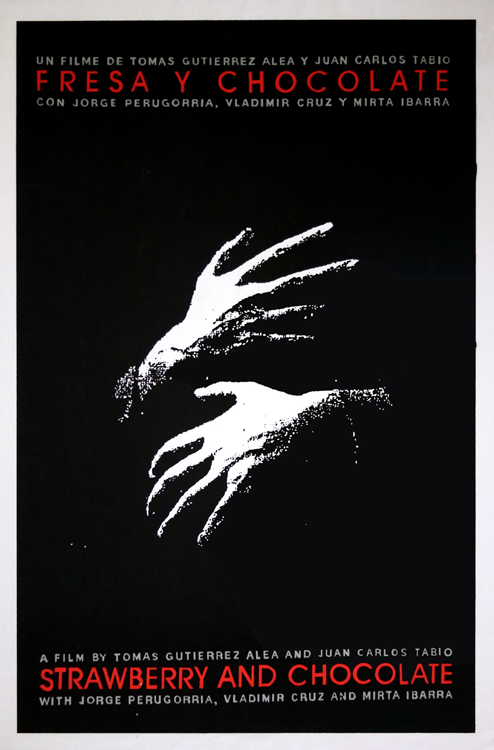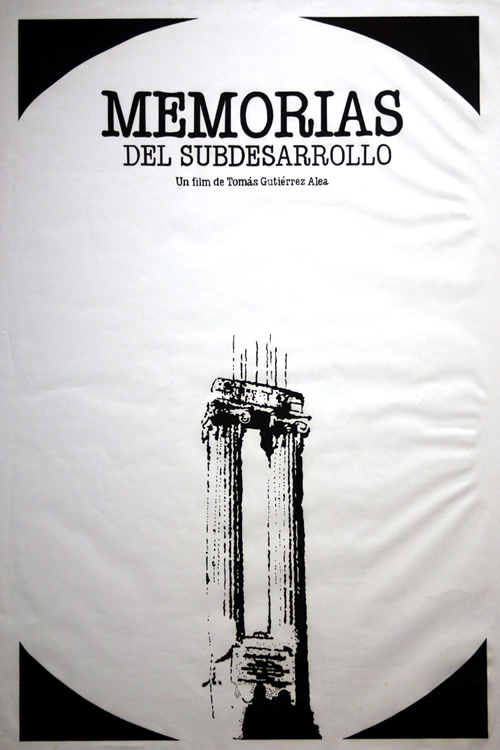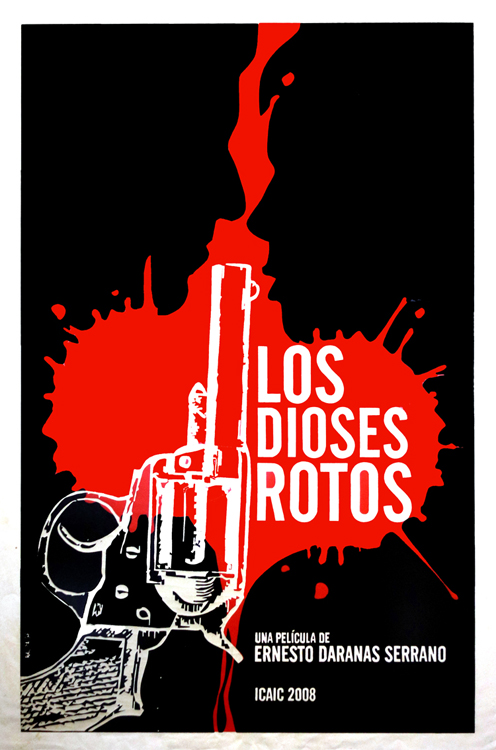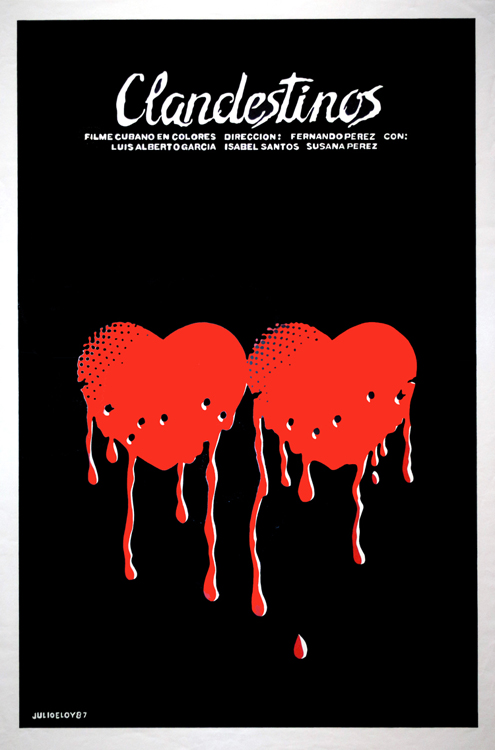“How does one get rid of underdevelopment? I believe that every day that passes is more and more difficult since underdevelopment taints everything…In underdevelopment everything is forgotten, people are inconsistent; there is no sense of continuity…” This is a reflection by Sergio, the main character in the Tomás Gutiérrez Alea film Memorias del subdesarrollo (Memories of the Underdevelopment). Although filmed in 1968, the story is set in the months prior to the Missile Crisis of October, 1962, a 13-day period of tension between the Soviet Union and the U.S. over the installation of nuclear-armed Soviet missiles in Cuba. On the edge of a nuclear war, Sergio walks the streets of Havana and reflects upon some of the pressing issues of the then-new revolutionary process.
This section shows how Cuban poster art reflects on the nature of life in an “underdeveloped” country. The work of contemporary Cuban designers highlights how recurrent themes of social mobility and sexual identity persist in some Cuban cultural products of the post-Revolutionary period.
Nelson Ponce, designer
Muestra de cine Cubano del ICAIC (Contemporary Cuban Film from ICAIC), 2012
silkscreen on paper
Collection Morriña-Menéndez
Nelson Ponce, designer
Premio Literario Casa de las Américas
(House of the Americas Prize for Literature), 2011
silkscreen on paper
Collection Morriña-Menéndez
The stylized animals in this poster for the 2011 Premio Literario Casa de las Américas reference an exhibit of popular Peruvian art that occurred in connection with the awards celebration that year. The exhibit, “condor contra toro” or “condor versus bull,” references a traditional Peruvian festival involving a fight between a bull and a condor, which symbolize the Spanish oppressors and the Peruvian loyalists.
The poster is based on the novel Yawar fiesta, by José María Arguedes. The Fiesta de la sangre (Festival of Blood) celebrates the cultural victory of the indigenous culture over the Spanish oppressor.
Written by Eileen Symons class of 2021, Art History major with French and Fine Arts minors, and a Museums Gallery Attendant.
Claudio Sotolongo, designer
Homenaje a Adolfo Llauradó (Tribute to Adolfo Llauradó)
2009
silkscreen on paper
Collection Morriña-Menéndez
El camino de la vida
(The Path of Life)
Isabel Santos, director
poster and film 2016
silkscreen on paper
Collection Morriña-Menéndez
Ernesto Ferrand, designer
Fresa y Chocolate
(Strawberry and Chocolate)
Tomás Gutiérrez Alea (Titón) and
Juan Carlos Tabío, directors
poster and film, 1994
silkscreen on paper
Collection Morriña-Menéndez
Fresa y Chocolate (Strawberry and Chocolate) was a groundbreaking film in its exploration of homosexuality while tracing the development of a complex relationship between two men, Diego and David, in Havana. Initially David conspires with another character to report and expose Diego’s homosexuality. However, their relationship evolves into a fraught platonic friendship. Eventually, David has a change of heart and becomes increasingly affectionate towards Diego. At the end of the film Diego must migrate. In 1994 for Cubans, migration meant permanent departure.
Ernesto Ferrand’s design focuses on an important final hug in the film. Highlighting only the hands against the black background, the poster attempts to capture the contained emotions of a relationship fractured by separation.
Ingrid Behety, designer
Memorias del subdesarrollo (Memories of the Underdevelopment)
Tomás Gutiérrez Alea (Titón), director
poster 1999 / film 1968
silkscreen on paper
Collection Morriña-Menéndez
Raúl Valdés (Raupa), designer
Los dioses rotos
(The Broken Gods)
Ernesto Daranas, director
poster and film 2008
silkscreen on paper
Collection Morriña-Menéndez
Julio Eloy Mesa, designer
Clandestinos (Clandestine)
Fernando Pérez, director
poster and film 1987
silkscreen on paper
Collection Morriña-Menéndez









